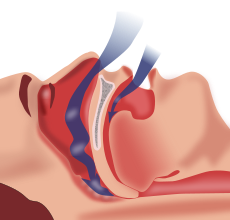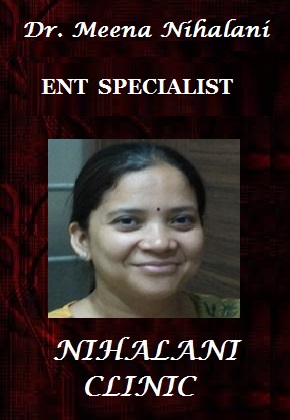ENT Specialist Blog
ENT Specialist Google Plus
ENT Specialist Twitter
ALL ABOUT ENT


Nasal polyps are soft, sac-like growths on the lining of the nose or sinuses.
Nasal polyps can grow anywhere on lining of the nose or the sinuses. They often grow where the sinuses open into the nasal cavity. Small polyps may not cause any problems. Large polyps can block your sinuses or nasal airway.
Nasal polyps are not cancer. They seem to grow due to long-term swelling and irritation in the nose from allergies, asthma, or infection.
No one knows exactly why some people get nasal polyps. If you have any of the following conditions, you may be more likely to get nasal polyps:
If you have small polyps, you may not have any symptoms. If polyps block nasal passages, a sinus infection can develop.
Symptoms include:
With polyps, you may feel like you always have a head cold.
Your doctor will look in your nose. Polyps look like a grayish grape-shaped growth in the nasal cavity.
Your doctor may do a CT scan of your sinuses. Polyps will appear as cloudy spots. Older polyps may have broken down some of the bone inside your sinuses.
Medicines help relieve symptoms, but rarely get rid of nasal polyps.
If medicines don’t work, or you have very large polyps, you may need surgery to remove them.
If you are suffering from this disease, then visit Dr Meena Nihalani , CLICK HERE to find her details .
Bachert C, Gevaert P, van Cauwenberge P. Nasal polyps and rhinosinusitis. In: Adkinson NF Jr., Bochner BS, Busse WW, Holgate ST, Lemaske RF Jr., eds.Middleton’s Allergy: Principles and Practice
Becker S. Surgical Management of Polyps in the Treatment of Nasal Airway Obstruction. Otolaryngologic Clinics of North America.
Mannin SC. Medical management of nasosinus infectious and inflammatory disease. In: Flint PW, Haughey BH, Lund LJ, et al, eds.Cummings Otolaryngology: Head & Neck Surgery
ENT Specialist Blog
ENT Specialist Google Plus
ENT Specialist Twitter
 Introduction
Introduction
Each year many suffer from sinus related diseases. What is more, indians spend h each year on health care costs contributable to sinusitis, making this disease an enormous public health issue. Sinus disease is a complex and wide ranging topic that go well beyond the scope of this website, but here we seek to educate our patients and referring physicians about some of the basic concepts surrounding this disease entity.
Sinus function and anatomy
The sinuses are hollow, bone and mucus lined spaces that lie just to the side of the nose and extend up to the bottom of our skull. There are several different sinuses in the human head and include two large paired maxillary (sometimes referred to as cheek sinuses), two frontal and sphenoid sinuses and multiple ethmoid sinuses. Although the function of the sinuses is subject to some controversy, most agree that the sinuses serve to warm, filter and humidify inspired air. In addition, these structures lessen the weight of the skull, act as a brace to absorb energy to protect the brain from trauma and play a role in creating certain resonances for human speech. The sinus mucosa has millions of tiny hairs called cilia that serve to push fluid and foreign material towards fixed openings called ostia. If this mucosa swells this can lead to build up of fluid and potential colonization with viruses, fungi, bacteria or chronic inflammation.
Types of sinus disease
Sinus disease is not just one entity but many. Overall infectious or inflammatory sinus disease can be broken up into acute (quick onset) or chronic (over a long period of time). Acute sinusitis is the most common form of sinusitis and is typically treated with a combination of antibiotics and agents to decrease inflammation in the nose. This type of infection typically resolves quickly over the course of a week or two. Surgery is typically not performed in this setting unless the patient has a complication of sinusitis (which can include spread to the eye, meninges or brain itself), or occasionally for patients that get multiple infections due to a structural abnormality.
Chronic sinusitis is more of a structural and inflammatory problem where the patient suffers over most of the year with sinus symptoms. Typically for this problem patients are given an aggressive long-term course of antibiotics combined with a nasal steroid and/or an oral steroid combined with other medications. Failure of symptoms and CT findings to resolve with this treatment strategy are an indication for endoscopic sinus surgery.
There are several other types of sinus issues, many of which are related to fungus. Fungus likes warm and moist environments, and when host defenses are damaged or working improperly, the sinuses make a very attractive setting. Fungal sinus disease has varied presentations and can range from an isolated fungus ball that is of little consequence to invasive fungus that in immuno-suppressed patients can be life threatening. Depending on the type of fungus and the severity of the infection treatment can range from medicines which reduce swelling to allow the fungus to be removed by the body, to endoscopic sinus surgery.
An additional kind of sinus disease occurs in conjunction with polyps. These polyps are typically related to allergy and inflammation and can fill the nose and block the sinuses. They may occasionally be associated with asthma and aspirin sensitivity (known as Samter’s triad). These polyps are typically sensitive to oral steroids, but this usually serves to debulk rather than cure the disease. Typically these patients require periodic endoscopic sinus surgery to keep these polyps and the resultant sinusitis at bay.
Sinus tumors, although relatively uncommon do occur as well. These can range from benign and low grade malignant lesions that can be removed via a minimally invasive endoscopic approach to tumors that are extremely aggressive and require removal of most or all of the entire cheek bone (maxilla) and occasionally the base of the skull and eye as well. These tumors typically present with symptoms similar to those of sinusitis but fail to respond to treatment. They are usually diagnosed with nasal endoscopy as well as CT scanning and magnetic resonance imaging (MRI).
If you are suffering from this disease, then visit Dr Meena Nihalani , CLICK HERE to find her details .
ENT Specialist Blog
ENT Specialist Google Plus
ENT Specialist Twitter

| Sleep apnea | |
|---|---|
|
Obstructive sleep apnea
|
|
| by pauses in or instances of shallow or infrequent breathing during . Each pause in breathing, called an , can last for several seconds to several minutes, and may occur, by definition, at least 5 times in an hour. Similarly, each abnormally shallow breathing event is called a . Sleep apnea is classified as a , meaning abnormal behavior or psychological events occur during sleep. When breathing is paused, carbon dioxide builds up in the bloodstream. Chemoreceptors in the blood stream note the high carbon dioxide levels. The brain is signaled to wake the person sleeping and breathe in air. Breathing normally will restore oxygen levels and the person will fall asleep again. Sleep apnea is often diagnosed with an overnight sleep test called a , or “sleep study”.Classification and external resources |
Sleep apnea (or sleep apnoea in British English) is a sleep disorder characterized by pauses in breathing or instances of shallow or infrequent breathing during sleep. Each pause in breathing, called an apnea, can last for several seconds to several minutes, and may occur, by definition, at least 5 times in an hour. Similarly, each abnormally shallow breathing event is called a hypopnea. Sleep apnea is classified as a dyssomnia, meaning abnormal behavior or psychological events occur during sleep.[When breathing is paused, carbon dioxide builds up in the bloodstream. Chemoreceptors in the blood stream note the high carbon dioxide levels. The brain is signaled to wake the person sleeping and breathe in air. Breathing normally will restore oxygen levels and the person will fall asleep again.[3] Sleep apnea is often diagnosed with an overnight sleep test called a polysomnogram, or “sleep study”.
There are three forms of sleep apnea: central (CSA), obstructive (OSA), and complex or mixed sleep apnea (i.e., a combination of central and obstructive) constituting 0.4%, 84%, and 15% of cases, respectively. In CSA, breathing is interrupted by a lack of respiratory effort; in OSA, breathing is interrupted by a physical block to airflow despite respiratory effort, and snoring is common. According to the National Institutes of Health, 12 million Americans have OSA. There are more cases of sleep apnea still because people either do not report the condition or do not know they have sleep apnea.
Regardless of type, an individual with sleep apnea is rarely aware of having difficulty breathing, even upon awakening.Sleep apnea is recognized as a problem by others witnessing the individual during episodes or is suspected because of its effects on the body. Symptoms may be present for years (or even decades) without identification, during which time the person may become conditioned to the daytime sleepiness and fatigue associated with sleep disturbance. Sleep apnea affects not only adults but some children as well.
Reference – Wikepedia
If you are suffering from this disease, then visit Dr Meena Nihalani , CLICK HERE to find her details .
ENT Specialist Blog
ENT Specialist Google Plus
ENT Specialist Twitter
ENT Specialist Blog
ENT Specialist Google Plus
ENT Specialist Twitter

From : Dr Meena Nihalani
Dizziness is a common symptom that people face at some point in their lives; however, if you are experiencing dizziness brought about by sudden movements or changes in position then you could be dealing vertigo, a condition that affects the balance in your inner ear.
If you regularly experience vertigo then you may find that sitting up or moving around makes you feel dizzier. While this isn’t always a cause for concern and many cases of dizziness will go away on their own with time, here are some of the main ear problems that might be to blame for your symptoms:
Benign paroxysmal positional vertigo (BPPV): This is the most common cause of vertigo and results when you change position quickly such as getting out of bed in the morning. While this condition can be annoying it’s rarely ever serious.
Inner ear inflammation: If you experience sudden and severe vertigo that lasts for days then you may be dealing with inflammation of the inner ear, also known as acute vestibular neuritis. You may also experience nausea and poor balance as a result. Sometimes these symptoms are so bad that you may even need to stay in bed. Luckily, this condition often clears up on its own; however, your Willow Grove, PA ENT doctor can prescribe certain medications to speed up recovery if the symptoms are affecting your daily life.
Meniere’s disease: This condition occurs when fluid builds up in the inner ear. You may experience sudden bouts of vertigo that last for hours on end. Along with vertigo you may also experience ringing or fullness in the ear and temporary hearing loss. While there is no cure for this disease there are ways to manage the symptoms including taking motion sickness and anti-nausea medications. Talk to your Willow Grove, PA ENT doctor about what medications could alleviate some of your symptoms.
Even though dizziness isn’t always a cause for concern, if your dizziness doesn’t go away on its own after a week or if you notice that your symptoms are getting worse then it’s time to schedule an appointment with your Willow Grove, PA ENT doctor at Ear Nose Throat & Facial Plastic Surgery Specialists, PC.
ENT Specialist Blog
ENT Specialist Google Plus
ENT Specialist Twitter